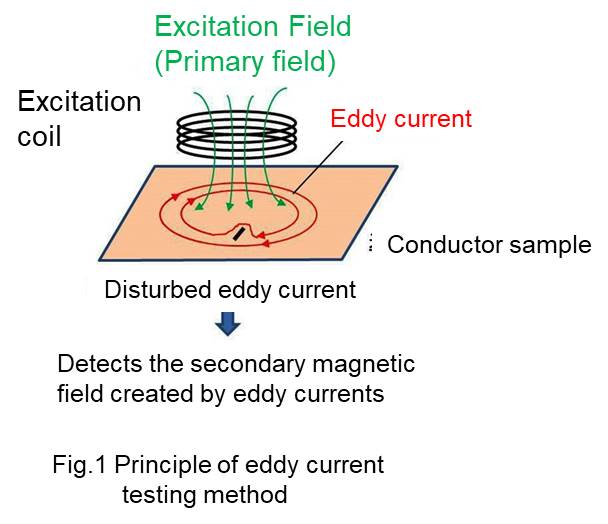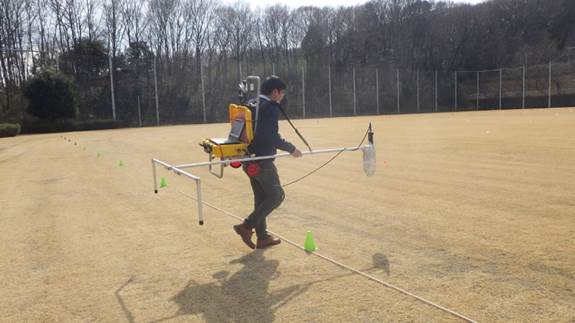超電導センサテクノロジー株式会社 SUSTEC(Superconducting Sensor Technology Corporation; SUSTEC)

Home > Technology > Nondestructive testing
Non-destructive inspection equipment for infrastructure deterioration diagnosis
The eddy current testing, which applies an alternating exciting magnetic field and measures the magnetic field created by the induced current (eddy current) flowing through the conductor (test piece), is one of the non-destructive inspection methods. This method detects changes in the magnetic field caused by disturbance of the eddy current due to a defect in the test piece. In the conventional eddy current testing method using an exciting magnetic field on the order of kHz, the inspection target is limited to the surface or a region close to the surface due to the skin effect. By using SQUID, which has high magnetic field sensitivity even in the low frequency range, it is possible to inspect the deep part and the back surface of the conductor using an exciting magnetic field of several Hz to several tens of Hz.

Recently, we have developed a three-channel SQUID eddy current testing (ECT) system on a hand cart for detection of a fatigue crack in a steel deck plate under an asphalt pavement used in an expressway bridge [6]. We could demonstrate a stable long-time operation of the ECT system on an expressway bridge in an urban area during the daytime and acquisition of correct data corresponding to some structural features of the expressway bridge. A part of this work was supported by the “Cross-ministerial Strategic Innovation Promotion Program” funded by JST.
< ↓ Click here for the actual video of the road test :>
References:
A. Tsukamoto, et al., "Development of Three-Channel HTS-SQUID Inspection System for Orthotropic Steel Decks of Expressway Bridges", IEEE Trans. Appl. Supercond., 29 (2019) 1601005.
Magnetic anomaly detector using a high-balanced SQUID gradiometer
We have succeeded in developing a high-temperature superconducting gradiometer with a balance of 1 / 10,000 under the research theme commissioned by the Acquisition, Technology and Logistics Agency. It is a technology that can be used to detect magnetic anomalies in the geomagnetism, such as archaeological site surveys and unexploded ordnance searches. The photograph below shows the field operation test of the prototype gradiometer.
